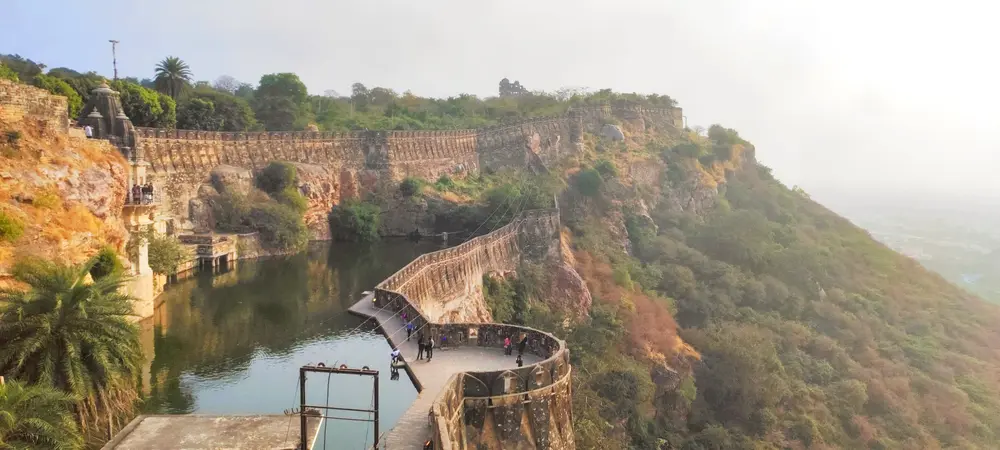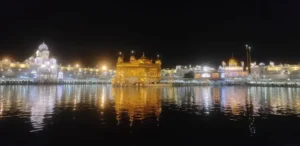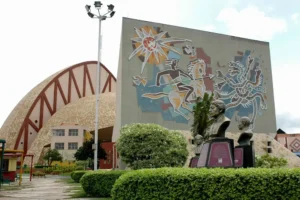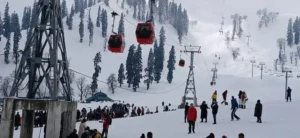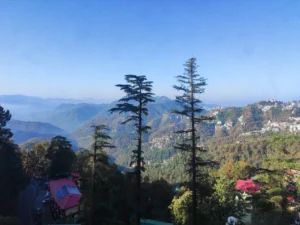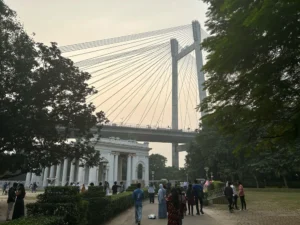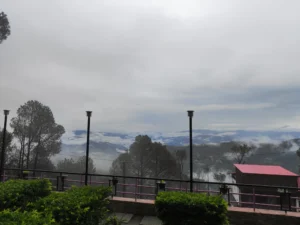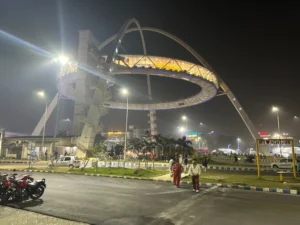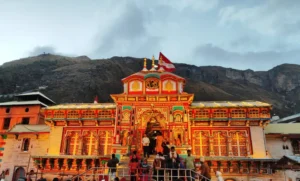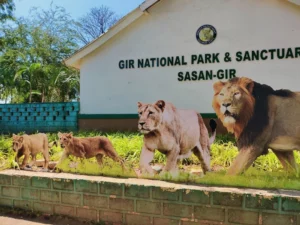Chittorgarh, also known as Chitror or Chittor or Chittaurgarh, located in Rajasthan, is a city steeped in history, bravery, and romance. Once the capital of the Mewar kingdom, it is home to the majestic Chittorgarh Fort, one of the largest forts in India and a UNESCO World Heritage Site.
The city symbolizes Rajput valor, sacrifice, and resilience, with legendary tales of Rana Kumbha, Maharana Pratap, and Rani Padmini echoing through its ancient walls. From stunning palaces and intricately carved temples to vibrant markets and serene lakes, Chittorgarh offers a perfect blend of history, culture, and natural beauty, making it a must-visit destination for travelers.
Best Season to Visit Chittorgarh:
October – March
During the winter months, weather remains pleasant as temperature remains between 10°C – 25°C. It is perfect for sightseeing and comfortable for exploring Chittorgarh Fort and its monuments.
Visitors can attend Jauhar Mela in February or March to commemorate the sacrifice of Rajput women through cultural performances and ceremonies.
In October, people celebrate Meera Mahotsav to honor Meera Bai’s devotion to Lord Krishna with bhajans and cultural programs.
Summer (April – June)
It is best to avoid visiting in these months as it gets very hot & dry with temperature ranging between 35°C – 45°C. It is not ideal for sightseeing as the heat makes it exhausting to explore the fort.
Monsoon (July – September)
Monsoon season brings out the lush greenery & beautiful views of the fort. Fewer crowds during the season, makes it peaceful. However, occasional heavy rainfall can make travel inconvenient. So plan accordingly.
How to Reach Chittorgarh:
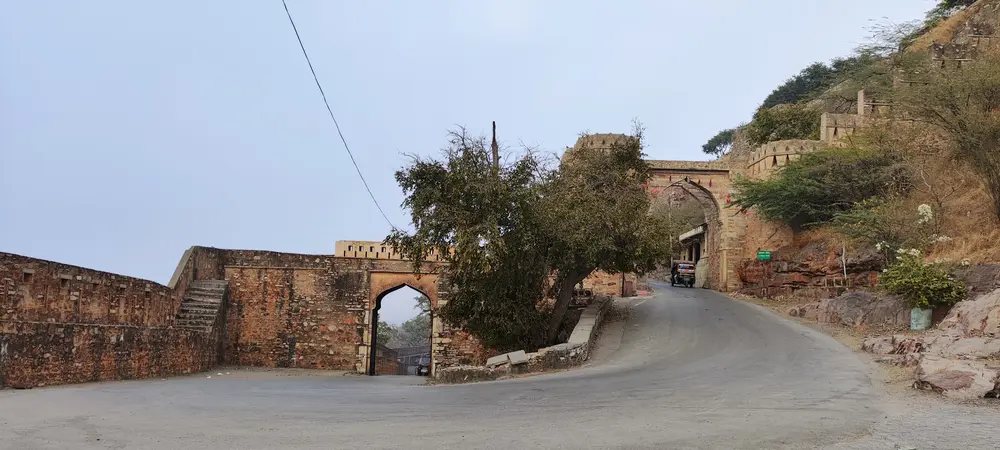
Opt for Scenic Drive
Chittorgarh has excellent road connectivity with Rajasthan and nearby states.
From Delhi, one can take the highway to Jaipur via NH48, crossing Bhilwara, to reach Chittorgarh in about 9–10 hours. It covers a distance of about 575 km.
Toll Charges: ₹600–₹800
Rajasthan State Road Transport buses (RSRTC) offer regular services.
Udaipur to Chittorgarh distance – 110Km. Time needed – 1.5-2 hrs.
By Train – Most Convenient Option
Several direct trains run from Delhi to Chittorgarh. Here are some of the best options:
Chetak Express (Daily)- Departure 7:40 PM, Arrival 6:35 AM.
Mewar Express (Daily)- Departure 6:25 PM, Arrival 4:45 AM.
Delhi Sarai Rohilla – Udaipur Express (3 Days a Week)- Departure 7:00 PM, Arrival 6:15 AM.
Jaipur to Chittorgarh train –
Jaipur – Udaipur Express (Daily)- Departure 2:00 PM, Arrival 7:30 PM
Chetak Express (Daily) – Departure 10:40 PM, Arrival 6:35 AM
UDZ Superfast Express (Daily) – Departure 6:15 AM, Arrival 11:35 AM
By Flight
Chittorgarh has no airport. The nearest airport is Maharana Pratap Airport, Udaipur which is 95 km away. From Delhi, one can take a 1.5 hours flight to Udaipur. From there, one can take private/public transport to Chittorgarh.
Chittorgarh Fort: Timeless Bastion of Rajput Valor and Grandeur

Perched atop a 590-foot-high hill, Chittorgarh Fort is one of India’s most magnificent and historically significant forts. Sprawling across 700 acres, it is the largest fort in India and a UNESCO World Heritage Site.
Originally built in the 7th century by the Mauri dynasty and later expanded by the Sisodia Rajputs, the fort has witnessed three major sieges. The fort houses seven massive gates (Pols), designed for defense.
Timings: 9:00 AM – 5:00 PM.
Entry Fee: ₹50 for Indians, ₹600 for foreign tourists. Car parking is available within fort complex.
One can also watch the Light and sound show at Chittorgarh Fort, which narrates the legendary tales of Chittorgarh, including the bravery of Maharana Pratap, Rani Padmini, and the three sieges of the fort.
Location: Kumbha Palace, Chittorgarh Fort.
Timings: Hindi Show – 7:00 PM (October to March) | 7:30 PM (April to September). English Show – Not always available; check locally. Arrive 15-20 minutes early to get the best seating.
Ticket Prices: ₹50 per person (Indian adult), ₹100 per person (Foreign visitors), ₹25 for children
Vijay Stambh: A Symbol of Rajput Bravery
Vijay Stambh, or the Victory Tower, is one of the most iconic monuments of Chittorgarh Fort.
Rana Kumbha built this 9-story tower in the 15th century to celebrate his triumph over the Sultan of Malwa. Standing 37 meters tall, it features intricate carvings of Hindu deities, battle scenes, and inscriptions.
Offering a panoramic view of the fort and the city from the top, the tower is a symbol of Rajput valor and architectural brilliance, making it a must-visit landmark.
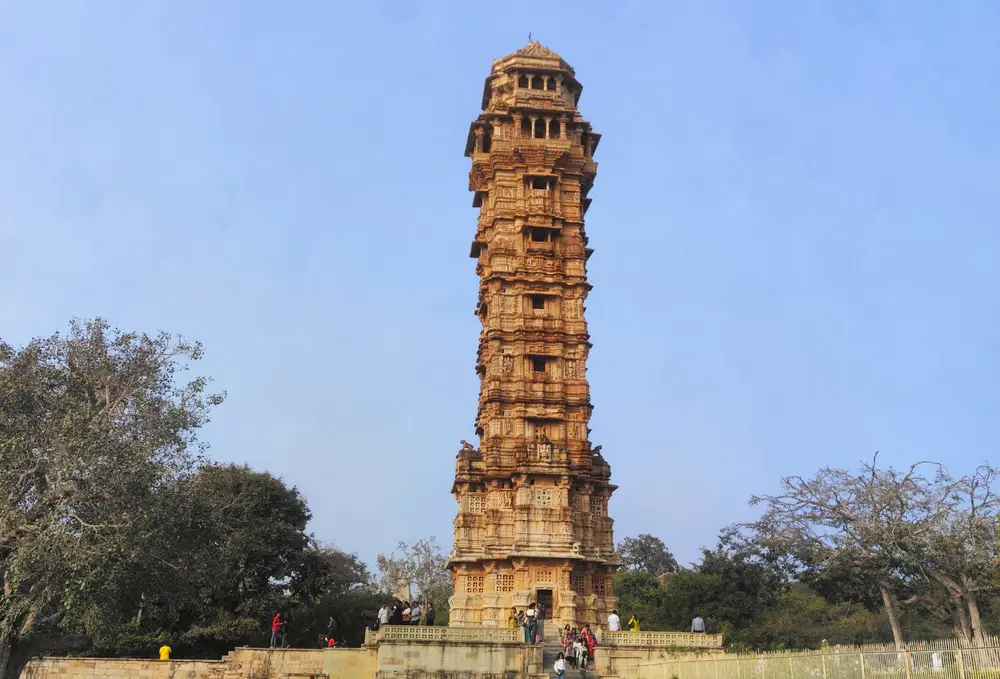
Kirti Stambh: Tower of Glory Standing Tall in Chittorgarh’s Legacy
Kirti Stambh, or the Tower of Fame, is a 12th-century monument, dedicated to Adinath, the first Jain Tirthankara.
Jain merchant Jijaji Rathod built this intricately carved 22-meter-tall tower, showcasing stunning sculptures and inscriptions that depict Jain traditions.
Delicate carvings of Jain deities and mythological figures adorn the Stambh. It serves as a significant symbol of Jain heritage and devotion, attracting history buffs and pilgrims alike.
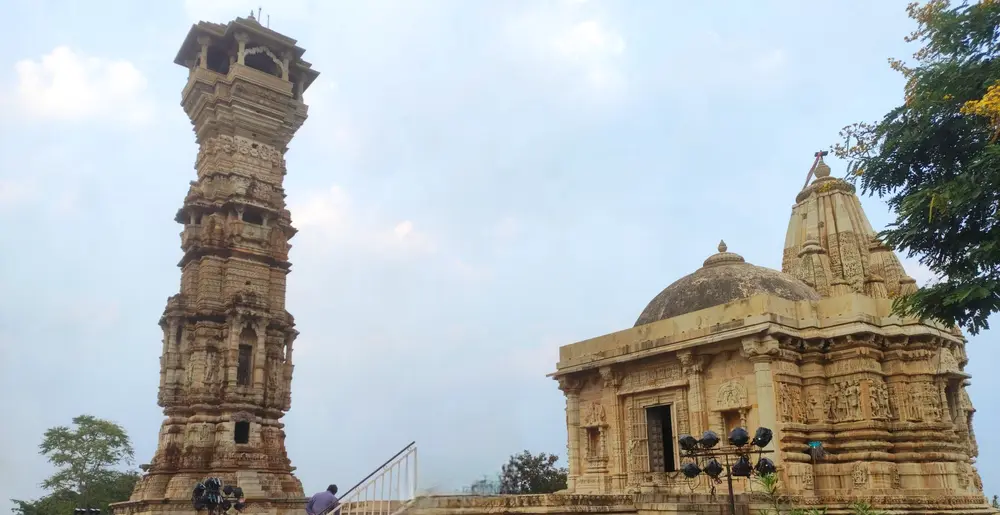
Rani Padmini’s Palace: Timeless Tale of Beauty, Honor, and Sacrifice
Rani Padmini’s Palace is one of the most famous attractions within Chittorgarh Fort. It is deeply linked to the legend of Rani Padmini, known for her beauty, bravery, and the tragic tale of Jauhar.
The palace is a three-story structure, a fine example of Rajput architecture. Rani Padmini’s Palace stands on the edge of a lotus pool (Padmini Lake), creating a mesmerizing reflection in the water. While tourists cannot access the palace, they can admire its view from a second rectangular courtyard overlooking the reservoir. This building is said to have housed a room with mirrors where Alauddin Khilji supposedly saw Rani Padmini’s reflection in the water. There is a third rectangular courtyard with double storied room on the south.
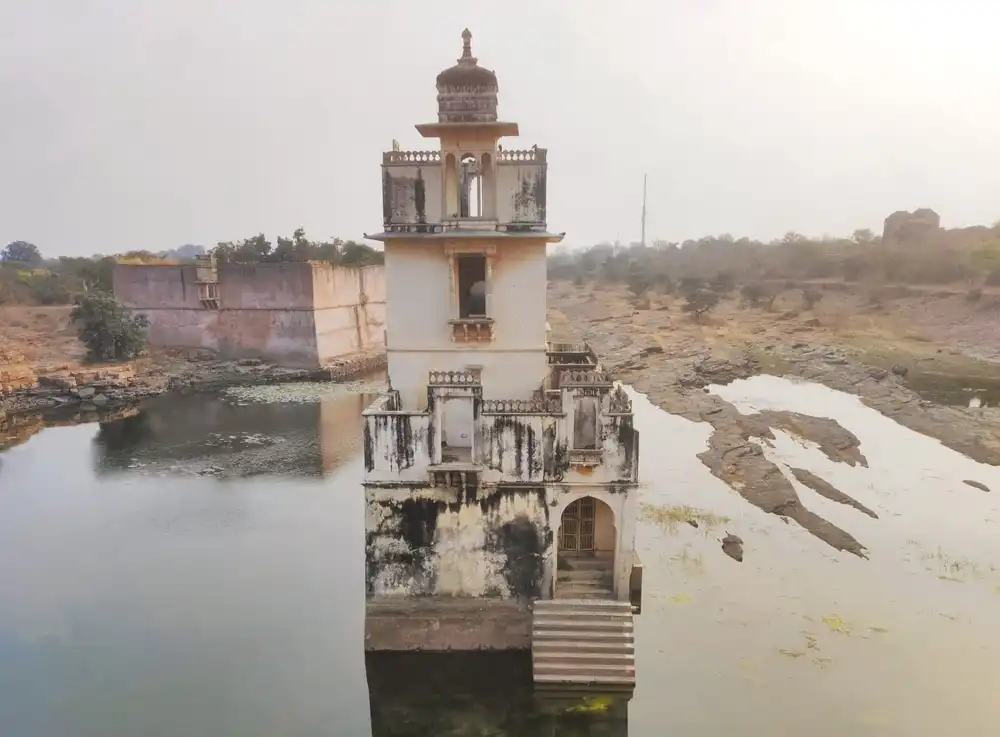
Gaumukh Reservoir: Chittorgarh’s Sacred Lifeline
The Gaumukh Reservoir is one of the most sacred and picturesque spots inside Chittorgarh Fort.
The name “Gaumukh” (meaning ‘cow’s mouth’) comes from the natural water source that continuously flows from a spout shaped like a cow’s mouth, into a deep reservoir below. The water is believed to be holy and never dries up, even during droughts. It was one of the water source within the fort.
Nearby, you’ll find the Samadhis (memorials) of saints who meditated here. Many visitors offer prayers and feed the fish in the reservoir, considering it auspicious.
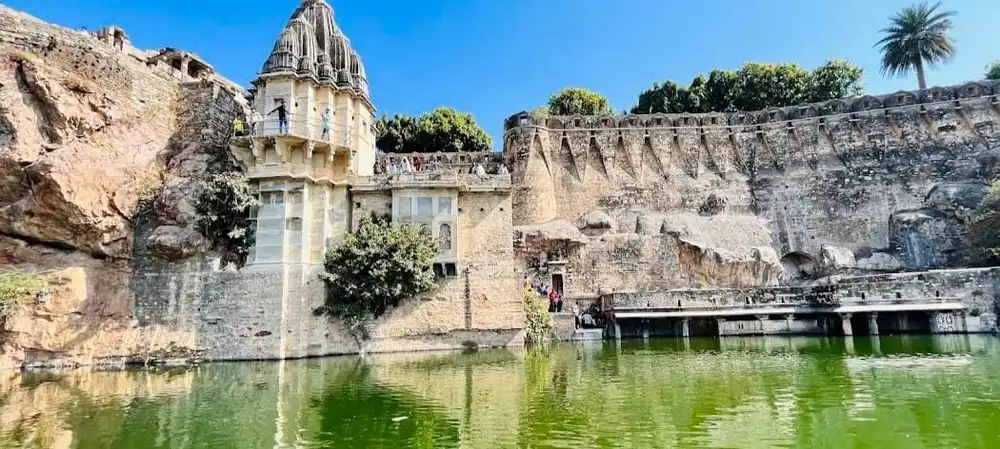
Kalika Mata Temple: Chittorgarh’s Ancient Shrine of Power and Devotion
Dedicated to Goddess Kali, the temple is an important pilgrimage site for devotees seeking protection, strength, and blessings.
Originally it was built in the 8th century as a Sun Temple by the Chauhan dynasty. In the 14th century, devotees converted the temple into a shrine for Goddess Kali, a fierce form of Goddess Durga. Mewar’s rulers worshiped Kalika Mata as their guardian deity, seeking strength and victory in battles.
Built in the classic Rajput and Pratihara architectural style, the temple features intricate carvings. The walls feature detailed carvings of Hindu gods and goddesses.
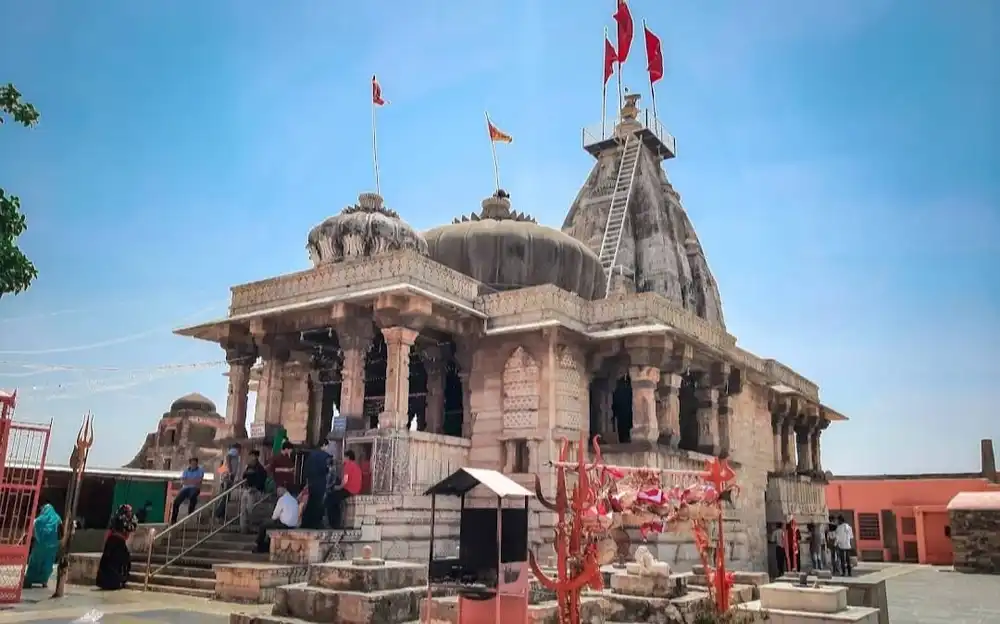
Jauhar Kund: Eternal Symbol of Rajput Honor and Sacrifice
Jauhar Kund is one of the most emotionally significant and historically important sites within Chittorgarh Fort. It marks the place where Rajput Queens along with thousands of Rajput women committed Jauhar (self-immolation) to protect their honor from invading army, making this site a powerful symbol of honor, bravery, and sacrifice.
1st Jauhar (1303 AD) – Led by Rani Padmini, during the siege by Alauddin Khilji.
2nd Jauhar (1535 AD) – Led by Rani Karnavati, during the attack by Bahadur Shah of Gujarat.
3rd Jauhar (1568 AD) – During Akbar’s invasion, when Chittorgarh fell to the Mughal forces.
The site features several Rajput cenotaphs (memorials) that honor the brave warriors and women.
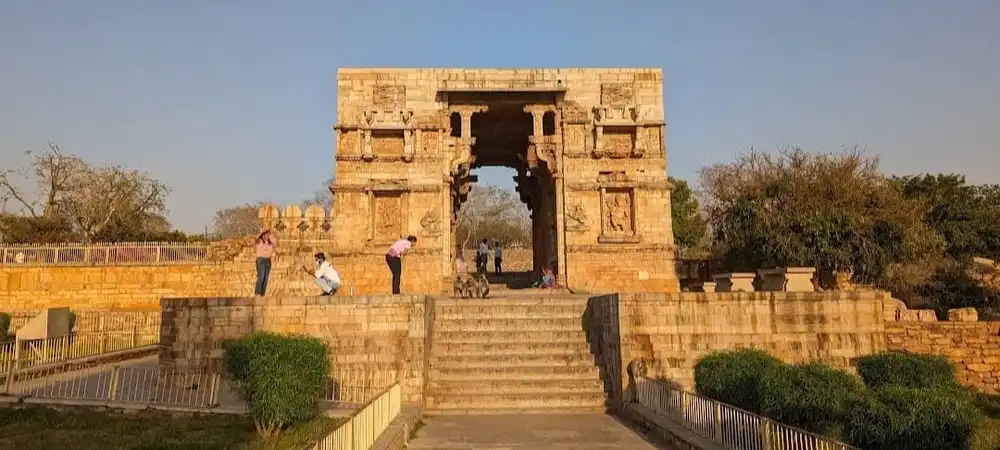
Samadhisvara Mahadev Temple: A Divine Abode of Lord Shiva
The Samadhisvara Mahadev Temple is one of the most sacred and ancient temple, dedicated to Lord Shiva.
It is known for its majestic three-faced (Trimukhi) Shiva idol, intricate carvings, and deep spiritual significance. Originally in the 11th century by King Bhoja (Paramara dynasty) and later renovated by the Guhila ruler, Rana Kumbha, in the 15th century.
A massive three-faced statue of Lord Shiva inside the temple, representing the past, present, and future. It also symbolizes creation, preservation, and destruction, embodying the cosmic cycle. The mandapa (pillared hall) and garbhagriha (sanctum) showcase classic Rajput and Solanki-style architecture. Detailed carvings of gods, goddesses, and celestial beings cover the walls, pillars, and ceiling. During Mahashivratri, the temple attracts devotees from all over.
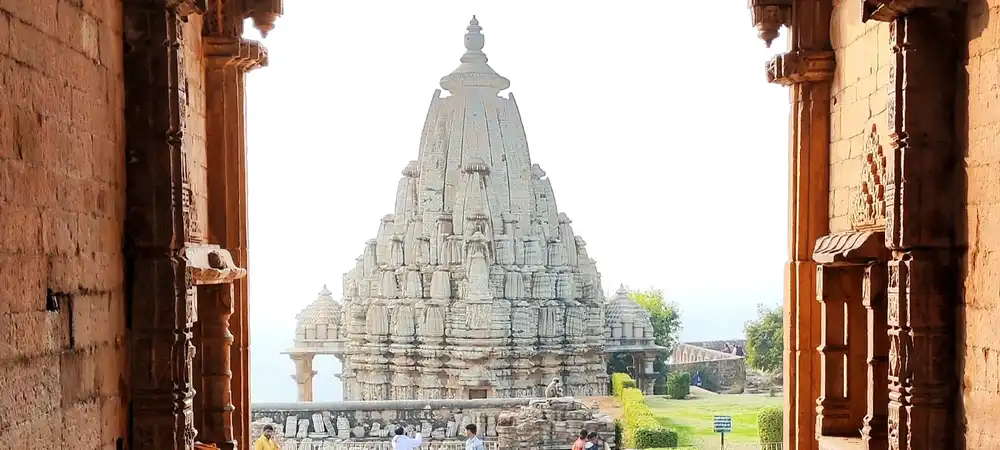
Meera Bai Temple: A Sacred Haven of Devotion and Eternal Love for Krishna
The Meera Temple is a sacred shrine, dedicated to Meera Bai, the legendary Rajput princess, poetess, and devotee of Lord Krishna. Meera Bai was a Rajput princess of Mewar who renounced royal luxuries and devoted herself to Krishna Bhakti (devotion to Lord Krishna). She wrote soulful bhajans (devotional songs), which are still sung across India. Legends say that Meera Bai merged into the Krishna idol at Dwarka, attaining spiritual salvation.
The temple was built by Maharana Kumbha in the 15th century. The pillars, arches, and walls depict Meera Bai’s devotion through carvings and motifs. Inside, a beautiful idol of Lord Krishna stands, believed to have been worshipped by Meera Bai. A small idol of Meera Bai sits beside Krishna, symbolizing her eternal devotion. Devotees celebrate festivals like Janmashtami and Meera Mahotsav with grand festivities and devotional music.
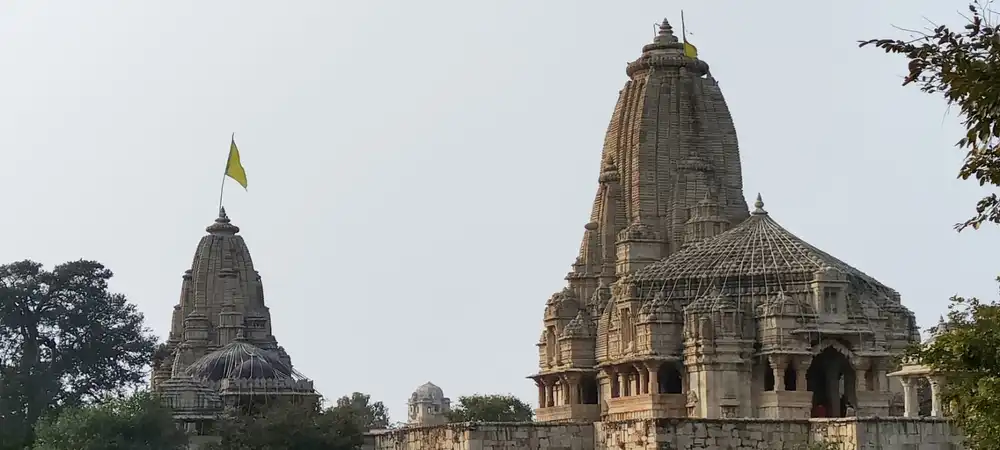
Kumbha Palace: The Majestic Stronghold of Rajput Bravery and Grandeur
This grand palace was the residence of Maharana Kumbha (1433–1468 AD) and witnessed some of the most defining moments in Rajput history.
Legends say the palace contains underground cellars where Rani Padmini performed Jauhar (self-immolation) to escape Alauddin Khilji’s invasion.
Additionally, it was the birthplace of Maharana Udai Singh II, the founder of Udaipur. Remarkably, his nurse Panna Dhai saved his life by courageously replacing him with her own child when enemies attacked.
The palace featured massive stone walls, intricately carved balconies, and grand gateways. Though mostly in ruins, the sheer size and remains of its multi-story structure showcase the architectural brilliance of the Rajput era. The palace had a private temple for the royal family. The royal quarters, audience halls, and courtyards reflect the luxurious yet war-focused lifestyle of the Rajputs.
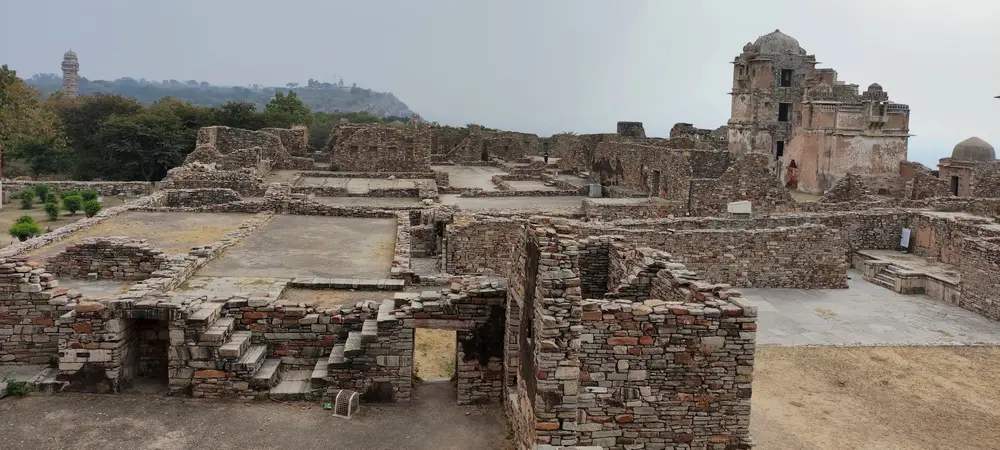
Ratan Singh Palace: A Regal Marvel
Ratan Singh Palace is a magnificent royal palace located inside Chittorgarh Fort, overlooking the Ratneshwar Lake. It is an important historical site and served as a winter retreat and leisure palace for Mewar rulers. It was built by Maharana Ratan Singh II (AD 1528–1531) of Mewar.
The palace follows classic Rajput architectural style, with intricately designed balconies, courtyards, and arched windows. The palace served as a residential palace for various Mewar rulers. It is believed that this palace played a role in Alauddin Khilji’s siege of Chittorgarh in 1303.
The royal family used a dedicated temple for Lord Shiva to offer prayers. The temple has intricate carvings and a spiritual aura, adding to the palace’s charm.

Bhavanath Mahadev Jain Temple
The temple is also known as Sattaees Devari or Satbis Deori, which means “Twenty-seven shrines” , referring to the multiple small shrines within the temple complex. The temple complex is dedicated to Lord Adinath (Rishabhanatha), the first Tirthankara of Jainism.
It features intricate carvings, stone pillars, and domes, characteristic of Jain architecture. The structure is built using white marble and sandstone. The temple complex is an important pilgrimage site for Shwetambar Jains.
The temple reflects the rich patronage of Jainism under Rajput rule and showcases the architectural brilliance of the medieval period.
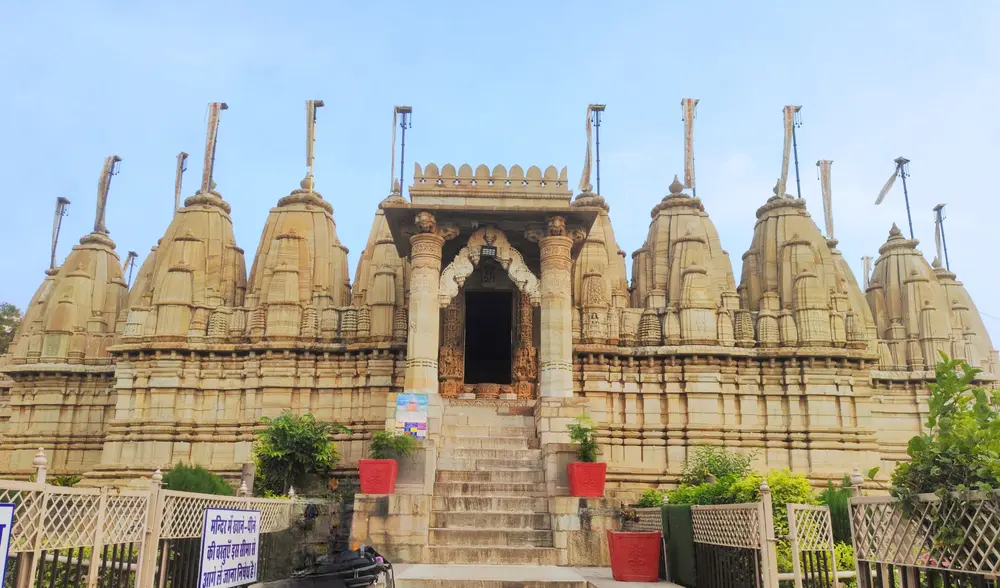
Fateh Prakash palace
Maharana Fateh Singh built this grand palace in the late 19th century, showcasing Rajput architecture, beautiful arches, and large corridors. It originally served as a royal residence, showcasing intricate wall paintings depicting Rajasthani legends from the 17th and 19th centuries, reflecting Maharana Fateh Singh’s appreciation for art and culture.
In 1968, authorities converted a significant portion of the palace into a museum, showcasing a remarkable collection of sculptures, coins, wood crafts, and weapons that provide insights into the region’s rich heritage.
Now, with its ongoing restoration, it is set to become an exclusive heritage hotel, adding to Rajasthan’s growing list of luxury accommodations within historical forts and palaces.
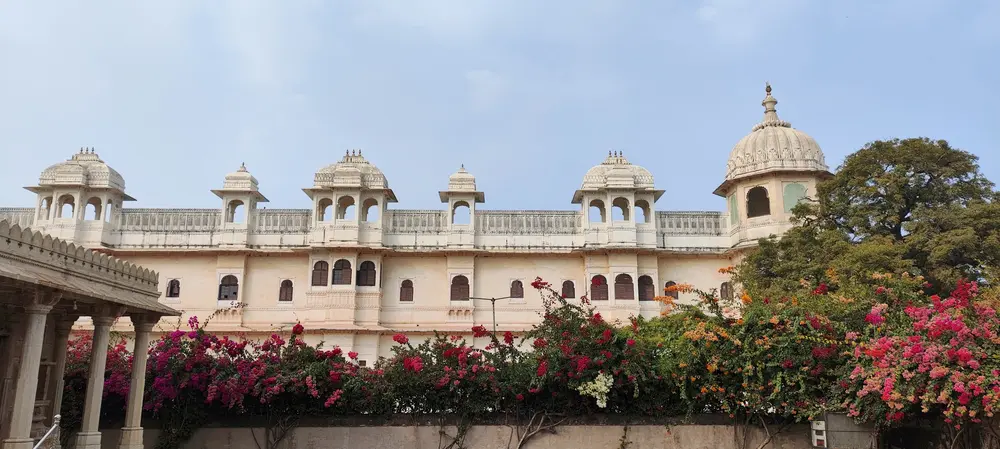
Conclusion
Chittorgarh stands as a timeless symbol of valor, sacrifice, and Rajput pride. Its grand fort, historic palaces, and legendary tales of heroism transport visitors to an era of unmatched bravery.
Whether you explore the majestic Chittorgarh Fort, the serene Gaumukh Reservoir, or the iconic Vijay Stambh, every corner of this city echoes stories of resilience and devotion.
A visit to Chittorgarh is not just a journey through history but an unforgettable experience that leaves you inspired by its enduring legacy.
